Skin
The Ultimate Japanese Skin Care Routine for Flawless, Radiant Skin

The Ultimate Japanese Skin Care Routine for Flawless, Radiant Skin achieving flawless, radiant skin is a goal many aspire to, and the Japanese skin care routine offers a time-tested path to reach this dream. Rooted in centuries of tradition, this routine focuses on nurturing the skin with gentle, natural ingredients and a mindful approach. Unlike the fast-paced routines often found in the West, the Japanese method emphasizes simplicity, consistency, and respect for the skin’s natural balance.
The Essence of Japanese Beauty Rituals
In Japan, beauty is viewed as a reflection of overall health and well-being. This philosophy is embedded in every step of the Japanese skin care routine. It’s not just about applying products—it’s about creating a harmonious relationship with your skin. By taking the time to care for your skin properly, you can enhance its natural beauty and achieve a complexion that glows from within.
Understanding the Fundamentals of Japanese Skin Care
Before diving into the specific steps of the Japanese skin care routine, it’s essential to understand the core principles that guide these practices. Japanese skincare is built around four key pillars: cleansing, hydration, protection, and nourishment. These elements work together to support the skin’s health, ensuring it remains youthful, vibrant, and resilient.
Step One: The Art of Double Cleansing
The first step in any Japanese skin care routine is cleansing, but not just any kind of cleansing—double cleansing. This method involves two steps to thoroughly remove makeup, dirt, and impurities from the skin.
Start with an oil-based cleanser. Japanese women have long used oil to dissolve makeup and sebum without stripping the skin of its natural oils. Gently massage the oil into your skin, allowing it to break down the day’s buildup. Rinse with lukewarm water, which ensures the pores remain open and receptive to the next step.
Next, use a water-based cleanser. This step ensures that any remaining residue, such as sweat or environmental pollutants, is washed away. Opt for a gentle foaming cleanser that respects the skin’s natural barrier while leaving it feeling fresh and clean.
Step Two: Exfoliation—A Gentle Renewal
Exfoliation is crucial in the Japanese skin care routine, but it is done with the utmost care. Over-exfoliation can damage the skin, so this step is typically performed just a few times a week. The goal is to remove dead skin cells and encourage cell turnover, revealing a brighter and smoother complexion.
Japanese exfoliants are often enzyme-based, which provides a gentler approach compared to harsh scrubs. These enzymes break down the protein bonds between dead skin cells, allowing them to be washed away effortlessly. The result is soft, radiant skin that’s primed to absorb the nourishing products that follow.
Step Three: The Role of Toner—Balancing and Preparing the Skin
In Japanese skin care, toners are known as “lotions” and play a vital role in the routine. These lightweight, hydrating liquids are designed to balance the skin’s pH after cleansing and provide an initial layer of moisture. This step is essential because it prepares the skin to better absorb the subsequent treatments.
Japanese toners are typically packed with hydrating ingredients such as hyaluronic acid, rice extract, and botanical waters. Apply the toner by gently patting it onto the skin with your hands, a technique that enhances absorption and minimizes waste.
Step Four: Essence—The Heart of Japanese Skin Care
Essence is often considered the cornerstone of the Japanese skin care routine. This lightweight, watery product is rich in active ingredients that deeply hydrate and repair the skin. Essences are designed to penetrate deeply, delivering moisture and nutrients where they are most needed.
To apply, pour a small amount of essence into your palms and gently press it into your skin. This method ensures that the product is evenly distributed and fully absorbed, leaving your skin plump, dewy, and ready for the next step.
Step Five: Serums—Targeted Treatments for Skin Concerns
Serums are concentrated formulas that target specific skin concerns such as hyperpigmentation, fine lines, or dullness. In the Japanese routine, serums are selected based on individual needs, allowing for a highly customized approach to skincare.
Japanese serums are known for their lightweight textures and potent ingredients, such as vitamin C, collagen, and fermented rice extract. Apply your serum by gently patting it into the skin, focusing on areas that need extra attention.
Step Six: Moisturizer—Sealing in Hydration
Moisturizing is a non-negotiable step in the Japanese skin care routine. This step helps to lock in all the hydrating and nourishing ingredients from the previous steps, creating a protective barrier that keeps the skin soft and supple.
Japanese moisturizers range from lightweight gels to rich creams, depending on your skin type and the season. During the hotter months, a lighter gel may be more suitable, while a cream provides extra protection during the colder seasons. Apply your moisturizer with gentle upward strokes to encourage circulation and absorption.
Step Seven: Sunscreen—Daily Protection Against Harmful UV Rays
Sun protection is taken very seriously in Japan, and for a good reason. UV rays are one of the primary causes of premature aging, including wrinkles, dark spots, and loss of elasticity. Therefore, applying sunscreen is an everyday essential in the Japanese skin care routine.
Japanese sunscreens are known for their lightweight, non-greasy formulas that blend seamlessly into the skin. They often contain additional skincare benefits, such as hydration or brightening ingredients, making them a multifunctional step in your routine. Apply sunscreen as the final step in your morning routine, ensuring that all exposed areas of the skin are protected.
The Japanese Night Skin Care Routine—Restoring and Rejuvenating
While the morning routine focuses on protection, the night routine is all about restoration. At night, the skin undergoes its natural repair process, so the products used should support and enhance this process.
Begin with double cleansing to remove makeup and impurities accumulated during the day. Follow with a toner, essence, and serum to hydrate and address specific concerns. End with a rich moisturizer or overnight mask to lock in moisture and repair the skin barrier while you sleep.
Incorporating Japanese Beauty Tools for Enhanced Results
Japanese skincare isn’t just about products—it’s also about the tools that enhance their effectiveness. Traditional beauty tools like the konjac sponge, jade roller, and facial massagers can be incorporated into your routine for added benefits.
The konjac sponge, made from the root of the konjac plant, gently exfoliates the skin while providing a deep cleanse. Jade rollers help to improve circulation, reduce puffiness, and enhance product absorption. Incorporating these tools into your routine can elevate your skincare practice, offering both functional and meditative benefits.
Japanese Skin Care Products You Must Try
To experience the full benefits of the Japanese skin care routine, it’s worth investing in some of the best Japanese skincare products. Brands like Shiseido, Hada Labo, and Tatcha offer products that have become staples in both Japanese and global beauty routines.
For example, Hada Labo’s Gokujyun Hyaluronic Acid Lotion is a cult favorite for its hydrating properties, while Shiseido’s Ultimune Power Infusing Concentrate is known for boosting the skin’s defense against aging. Tatcha’s Water Cream provides lightweight hydration that leaves the skin feeling fresh and radiant.
Adapting the Japanese Skin Care Routine for Your Skin Type
While the Japanese skin care routine is highly effective, it’s essential to adapt it to your specific skin type. Whether you have dry, oily, sensitive, or combination skin, the key is to choose products that suit your needs and adjust the routine as necessary.
For dry skin, focus on products with intense hydration and avoid harsh exfoliants. If you have oily skin, opt for lightweight, non-comedogenic products that won’t clog pores. Sensitive skin types should prioritize gentle, fragrance-free products to avoid irritation.
The Importance of Consistency in Japanese Skin Care
One of the most crucial aspects of the Japanese skin care routine is consistency. The results are not immediate, but with patience and regular practice, you will begin to see noticeable improvements in your skin’s texture, tone, and overall health.
Remember, skincare is a long-term investment. By dedicating time each day to your routine, you are not only nurturing your skin but also creating a moment of self-care that can have positive effects on your overall well-being.
The Role of Diet in Japanese Skin Care
The Japanese approach to beauty extends beyond topical treatments. Diet plays a significant role in maintaining healthy, glowing skin. Traditional Japanese cuisine is rich in vitamins, antioxidants, and fatty acids that nourish the skin from within.
Foods like fish, seaweed, green tea, and soy are staples in the Japanese diet and provide essential nutrients that support skin health. Incorporating these foods into your diet can enhance the effects of your skincare routine, leading to even more radiant results.
Cultural Practices That Influence Japanese Skin Care
Japanese skincare is deeply intertwined with cultural practices that emphasize mindfulness, respect for nature, and simplicity. Concepts such as “wabi-sabi” (finding beauty in imperfection) and “mottainai” (reducing waste) influence how Japanese women approach skincare.
This cultural backdrop fosters a holistic view of beauty, where skincare is not just about appearance but also about living harmoniously with nature and oneself. By embracing these principles, you can transform your skincare routine into a more meaningful and fulfilling practice.
Common Misconceptions About Japanese Skin Care
There are several misconceptions about Japanese skin care, particularly around the idea that it is overly complicated or time-consuming. In reality, the Japanese approach is about finding what works best for your skin and sticking with it consistently.
Another misconception is that Japanese skincare products are only suitable for certain skin types. However, the diversity of products available ensures that there is something for everyone, regardless of skin type or concern.
How to Start Your Own Japanese Skin Care Routine
Starting your own Japanese skin care routine may seem daunting at first, but it’s easier than you might think. Begin by incorporating one or two steps into your existing routine, such as double cleansing or using an essence. As you become more comfortable, you can gradually add more steps until you’ve built a complete routine. The Ultimate Japanese Skin Care Routine for Flawless Radiant Skin.
The key is to listen to your skin and adjust the routine based on its needs. Over time, you’ll develop a routine that not only improves your skin but also brings a sense of calm and balance to your daily life.
FAQs
What makes the Japanese skin care routine different from other routines?
The Japanese skin care routine focuses on gentle, hydrating steps that respect the skin’s natural barrier, emphasizing long-term health over quick fixes.
How often should I follow the Japanese skin care routine?
You should follow the routine daily, with exfoliation limited to a few times a week depending on your skin type.
Can I use Western products in a Japanese skin care routine?
Yes, as long as they align with the principles of hydration, gentle cleansing, and protection.
Is the Japanese skin care routine suitable for sensitive skin?
Absolutely. The routine is designed to be gentle and can be adapted with products specifically formulated for sensitive skin.
Do I need to use all the steps in the Japanese skin care routine?
While it’s beneficial to follow all the steps, you can customize the routine to fit your lifestyle and skin needs.
How soon will I see results from the Japanese skin care routine?
With consistency, you can start seeing noticeable improvements within a few weeks, but the best results come with long-term practice.
Conclusion
The Ultimate Japanese Skin Care Routine for Flawless Radiant Skin. The Japanese skin care routine offers a holistic approach to achieving beautiful, healthy skin. By embracing its principles of gentle cleansing, deep hydration, and consistent care, you can transform your complexion and enjoy a radiant glow that lasts. Remember, skincare is a journey—one that is as much about taking care of your well-being as it is about enhancing your beauty.
Skin
Can Dietary Choices Influence Skin Pigmentation?

The adage “you are what you eat” holds a surprising veracity when considering the vitality and hue of your skin. While factors like heredity, lifestyle, and skincare regimens undeniably shape your dermal health, the food you consume wields its unique influence. Certain edibles can accentuate or subtly shift your natural complexion, lending it a luminous radiance or, conversely, prompting discoloration. But to what extent can nutrition modify skin pigmentation? Let’s delve into the scientific intricacies of this captivating connection.
Carotenoids: Nature’s Pigment Architects
Carotenoids, organic pigments residing in produce like carrots, spinach, sweet potatoes, and tomatoes, are responsible for their vivid yellow, orange, and red tones. Upon ingestion, these pigments are stored within the skin’s outermost layer, imbuing it with a sunlit, golden hue. This phenomenon, often termed “carotenoid-induced skin coloration,” exemplifies how diet directly interacts with dermal appearance.
Research substantiates that individuals who incorporate carotenoid-rich provisions into their meals often exhibit a healthier, more alluring skin tone. However, this effect is transient, dissipating once the consumption of such nutrient-dense foods declines.
Beta-Carotene and Its Surprising Effects
A prominent member of the carotenoid family, beta-carotene, is particularly adept at altering skin tone. Found in abundance in pumpkins, carrots, and yams, this compound can accumulate in the skin with excessive consumption, leading to a condition known as carotenemia. This temporary and benign state renders the skin a yellowish-orange tint, a striking testament to how dietary elements manifest visibly.

Hydration: The Unsung Hero of Skin Vitality
While water itself doesn’t transform pigmentation, it remains indispensable for preserving skin suppleness and averting dryness. Adequate hydration amplifies your skin’s natural brilliance, making it appear dewy and invigorated. In essence, water functions as a silent enhancer of your dermal luminosity.
Antioxidants: Guardians of Radiance
Foods imbued with antioxidants—like berries, green tea, and walnuts—fortify your skin by neutralizing harmful free radicals that damage cells and incite pigmentation irregularities. Regular consumption of these nutrient powerhouses fosters an even, radiant skin tone, underscoring the protective synergy between diet and dermal health.
Culinary Culprits Behind Discoloration
Not all dietary choices illuminate the skin. Certain foods detract from its vitality:
- Processed Sugars and Snacks: Excessive intake inflames the body, manifesting as redness, blemishes, and lackluster skin.
- High Sodium Content: Overindulgence in salt dehydrates the body, leaving the skin pallid and fatigued.
- Allergy-Inducing Foods: For some, food sensitivities can provoke rashes, discoloration, or uneven pigmentation.
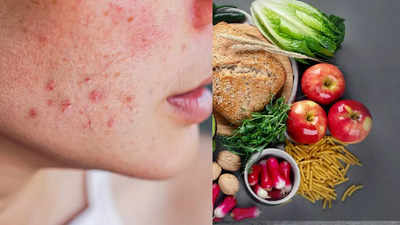
Cultural Perspectives on Diet and Skin Brilliance
Across global cultures, dietary customs play an integral role in nurturing skin radiance.
- South Asia: Turmeric, revered for its anti-inflammatory prowess, is a culinary cornerstone for enhancing skin clarity.
- East Asia: Green tea is cherished for fostering an ethereal, even-toned complexion.
- Mediterranean Region: Olive oil and nuts, staples of this diet, are lauded for promoting glowing, youthful skin.
Can Food Permanently Transform Skin Tone?
Despite its temporary influence, food cannot permanently alter melanin levels—the pigment dictating your natural skin color. Genetic coding and sun exposure govern melanin production, limiting the extent to which diet alone can modify pigmentation.

Culinary Tips for Radiant Skin
For a diet that enhances skin health and luminosity, consider these recommendations:
- Vibrant Produce: Infuse your meals with fruits and vegetables brimming with carotenoids and antioxidants.
- Omega-Rich Fish: Fatty fish like salmon deliver essential lipids that hydrate and soothe skin.
- Vitamin E Sources: Nuts and seeds shield skin cells from oxidative stress.
- Whole Grains: Support dermal repair with nutrient-dense grains.
Conclusion:
While dietary choices cannot override genetics, they play an undeniable role in amplifying your skin’s texture, tone, and radiance. By mindfully selecting nutrient-rich foods, you can embrace a complexion that reflects health and vitality. Remember, the nourishment on your plate is mirrored in your skin—so let it glow with wholesome intention.
Skin
Natural Face Moisturizers for Rosacea: Reviews & Buyers Guide
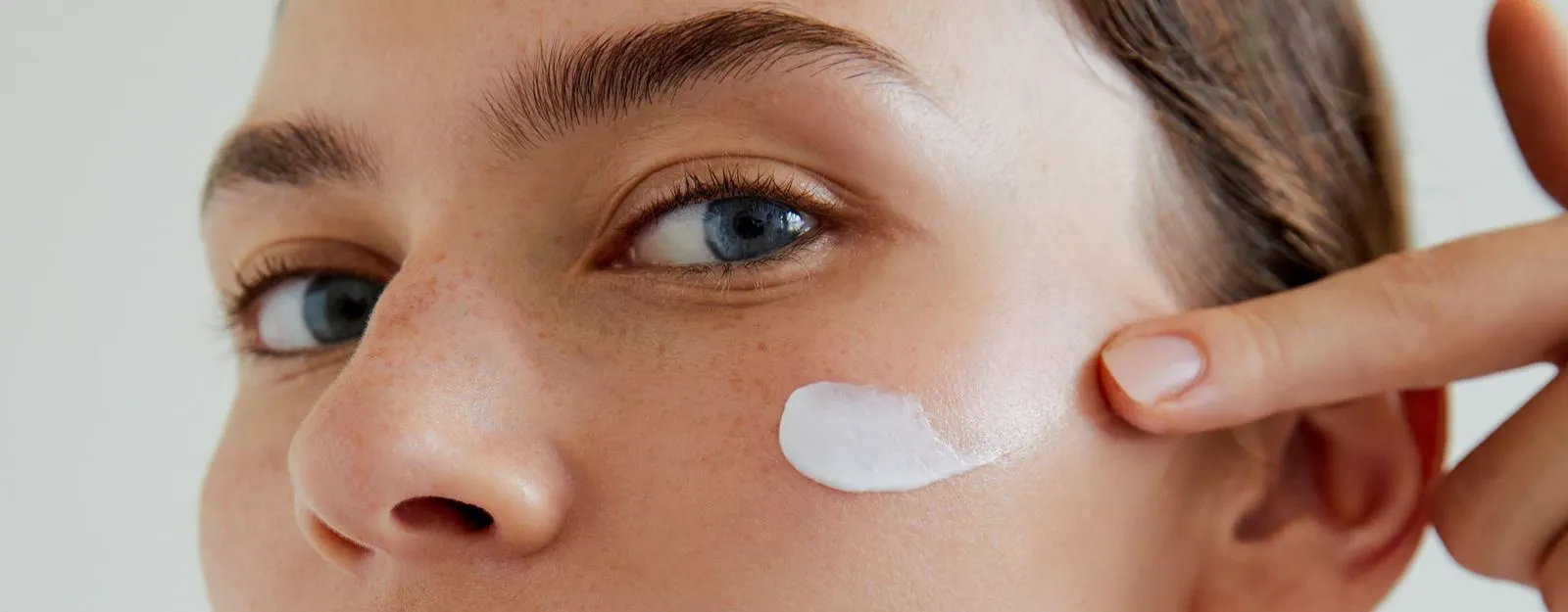
Table of Contents
Tips on Choosing the Right Moisturizer For Your Skin
Advantages of Using a Natural Face Moisturizer
1. These creams can help to reduce wrinkles:
2. Moisturizers are ideal for your skin:
3. The oils protect your skin:
4. The creams shrink enlarged pores:
5. The moisturizers down rashes:
What to Consider When Looking for Moisturizers for Rosacea
Best face wash and moisturizer for rosacea: Moisturizing your skin is a great way to protect your skin when treating rosacea. Some natural face moisturizers offer protection against environmental factors that exacerbate rosacea symptoms.
Before you settle on a moisturizer, read this review carefully, and always talk to your dermatologist.
- Avoid moisturizers that have too many fragrances. You should also avoid harsh cleansers, or any products that contain alcohol as they may contribute to rosacea outbreaks.
- Watch out for rosacea irritants found in different skin care products. They include alcohol, fragrance, Hazel, eucalyptus oil, peppermint and menthol. Other things you want to avoid include exfoliating agents, astringents and anything else that’s harsh for sensitive skin.
- Test any product on a peripheral area before you apply it on your skin. That will help you avoid any product that you react to and take note of the ingredients. Rosacea irritants vary from person to person, and your skin’s reaction should be your guide.
Mistakes to Avoid When Applying Moisturizers
Over-saturating your skin
Rubbing the skin too hard
Not allowing the cream to sink in
Forgetting the area under the eyes
Forgetting the neck area
What you Should Know Before Using Moisturizer for Rosacea
1. Premature wrinkles:
2. Your complexion may be dull and flaky:
3. Your layer of protection may become lost:
4. Your skin may become itchy:
Read the Label
Sensitive skin
Bland moisturizers
Best face wash and moisturizer for rosacea: These moisturizers are free from harsh ingredients that irritate the skin. You want to avoid anything that can trigger a flare-up. Avoid using moisturizers that have redundant components. The best products alleviate your skin’s dryness. Avoid moisturizers with alcohol, fragrances and related additives.
Avoid acne treatment products
Regardless of whether your rosacea is accompanied with pimples, it is not advisable to use moisturizers formulated for treating acne. They have ingredients such as benzoyl peroxide and salicylic acid that can dry your skin. Consult a dermatologist for the best way to treat acne while dealing with rosacea.
Calming ingredients
Try using moisturizers that have a calming effect on your skin to reduce the symptoms of rosacea. Chamomile, aloe and green tea are natural products that have a soothing effect. That will help to lessen the redness and inflammation you could be experiencing.
Sunscreen
Exposure to the sun is a known trigger for rosacea flare ups. Choose a moisturizer with an SPF 15 protection or higher or stay covered!
5 of the Best Moisturizers for Relieving Rosacea Reviewed
1. Miravage Facial Redness and Rosacea Relief Cream & Anti-Aging Moisturizer Serum
PROS
- You can wear it under your makeup
- Offers anti-aging benefits
- There is no greasy feeling
- Quickly absorbed into your skin
CONS
- Has a light scent that lingers
2. Era Organics Face Cream
PROS
- 60-day money back guarantee
- Non-greasy formula
- Has anti-aging properties
CONS
- Can be a bit expensive
3. Aveeno Eczema Therapy Moisturizing Cream
PROS
- Recommended by dermatologists
- Fast acting formula that hydrates and soothes
- Steroid and fragrance free
- Reasonably priced
- Great packaging for easy use
CONS
- Relatively thick formula feels heavy during application
4. HoneySkin Organics Aloe Vera Ultimate Face and Body Cream
PROS
- Organic product
- Doesn’t have fillers like mineral oils, parabens or water
- Light non-greasy formula
- No fragrance
CONS
- A little bit costly
- Few people are allergic to some ingredients
5. La Roche-Posay Soothing Moisturizer
PROS
- Fragrance free
- Reduces chances of skin dryness
- Easy to apply light texture
CONS
- It is relatively expensive
Conclusion
Dermatologists still have a long way to go about rosacea. Scientists are still learning what its real causes are and the best way to treat it. While there may be some genetic factors, the environment has a big contribution as well. There are different underlying factors causing rosacea. People battling it should make choices that eliminate the risk of outbreaks. Take note that your diet can trigger rosacea flare-ups. You want to avoid spicy foods, hot foods and drinks, and alcoholic beverages. But a moisturizer designed for those suffering from rosacea can help for some. As per the review, the Honeyskin Face & Body Cream stands out to me as the best moisturizer for rosacea here. Just remember that everyone’s skin reacts differently. Trial & error and speaking to your dermatologist are a couple of ways you can figure out which cream will work for your skin.
Skin
Neutrogena Nordic Berry Lip Balm

For those who prize meticulous lip care, the Neutrogena Nordic Berry Lip Balm emerges as a singular gem. Revered for its remarkable capacity to nurture, rejuvenate, and shield lips from the merciless grip of environmental extremities, this balm epitomizes the harmony of scientific innovation and nature’s bounty. Drawing inspiration from the nutrient-laden Nordic berry, it offers an exquisite confluence of advanced dermatological craftsmanship and organically sourced constituents. Below, we explore why this product claims a venerated spot among lip care connoisseurs globally.

Why Neutrogena Nordic Berry Lip Balm Stands Apart
This isn’t just another run-of-the-mill lip balm—it’s an intricate symphony of potent natural extracts and cutting-edge dermatological precision. Key attributes include:
- Infusion of Nordic Berry Extracts: These berries, abundant in antioxidants and vital nutrients, neutralize free radicals and infuse lips with deep hydration.
- Dermatologist-Endorsed Integrity: Clinically validated for its mildness, this balm suits even the most delicate lips.
- Enduring Moisturization: In contrast to the fleeting hydration offered by many alternatives, this balm ensures extended softness and resilience.
Dissecting the Key Ingredients
Nordic Berry Extract
As the core essence of this formulation, Nordic berry extract delivers unparalleled skin-enhancing benefits. Rich in vitamins C and E, it fortifies against environmental adversities while restoring suppleness.
Glycerin
Esteemed as a humectant, glycerin magnetizes moisture, safeguarding lips against aridity.
Panthenol (Pro-Vitamin B5)
Renowned for its reparative prowess, panthenol alleviates discomfort caused by cracked or inflamed lips, promoting swift recovery.
Shea Butter
This natural emollient cocoons the lips in a barrier of hydration, thwarting damage from icy winds and relentless heat.

Advantages of Using Neutrogena Nordic Berry Lip Balm
- Profound Moisture
This balm obliterates dryness, leaving lips velvety smooth. Its humectant-emollient blend delivers moisture unparalleled in longevity. - Defensive Antioxidants
Empowered by Nordic berry extract, the balm shields lips from oxidative stress, protecting against UV rays and pollution. - Extended Wear Time
Unlike its peers, this balm minimizes the need for frequent applications, offering sustained comfort throughout the day. - Luxurious Texture and Subtle Scent
Its silken consistency glides effortlessly across lips, while the faint aroma of Nordic berries provides a delightful sensory experience. - Adaptability Across Seasons
From frosty winters to sweltering summers, this balm is indispensable for year-round lip care.
Optimal Usage for Maximum Benefit
To harness the full potential of Neutrogena Nordic Berry Lip Balm, consider the following regimen:
- Gentle Exfoliation: Slough away dead skin cells with a mild lip scrub.
- Generous Application: Evenly coat your lips for comprehensive hydration.
- Reapplication Protocol: While its longevity is noteworthy, reapply after meals or exposure to severe conditions.
- Pairing with Lip Masks: For intense care, combine it with an overnight lip treatment.

A Comparative Glance
Positioned ahead of its competitors, Neutrogena Nordic Berry Lip Balm prioritizes the root causes of lip distress. Unlike generic alternatives offering superficial relief, this balm provides enduring solutions through its innovative blend of natural antioxidants and hydrating agents.
What Distinguishes It:
- Pure Ingredients: Free from irritants like parabens and synthetic fragrances.
- Expert Recommendations: Favored by dermatologists for its hypoallergenic attributes.
- Affordable Luxury: Top-tier efficacy without an exorbitant price.
Dermatological Advocacy
Esteemed by skin experts, Neutrogena Nordic Berry Lip Balm consistently proves its mettle. Its hypoallergenic composition and reparative properties make it suitable for all age groups, including children, ensuring lips remain protected and resilient.
The Ideal Candidate for This Balm
This balm caters to a wide audience:
- Chronic Dryness: An elixir for persistently parched lips.
- Extreme Climates: A fortress against severe cold, wind, and UV exposure.
- Sensitive Individuals: Free from harsh chemicals, ensuring compatibility with delicate skin.
Glowing Testimonials
Enthusiastic users worldwide laud this balm’s transformative effects:
- “No lip balm has ever worked as effectively! My lips feel rejuvenated all day.” – Sarah M.
- “The fruity scent and long-lasting hydration make this a staple for me.” – James K.
- “Winters used to wreak havoc on my lips—this balm changed everything.” – Emily R.
Accessibility
Conveniently available, Neutrogena Nordic Berry Lip Balm can be procured through:
- The official Neutrogena website.
- Major platforms like Amazon.
- Retail giants such as Walmart and Target.
- Pharmacies including CVS and Walgreens.
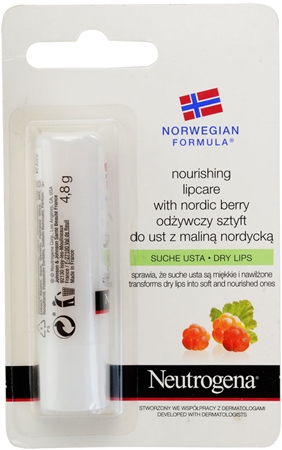
Closing Thoughts
Neutrogena Nordic Berry Lip Balm transcends ordinary lip care to deliver an unparalleled experience. Blending the nourishing essence of Nordic berries with dermatologist-approved science, it offers year-round hydration, protection, and repair. For anyone seeking soft, healthy lips, this balm stands unrivaled in its category.
-

 Skin10 months ago
Skin10 months agoNatural Oil-Free Face Moisturizer Reviews & Buyers Guide
-
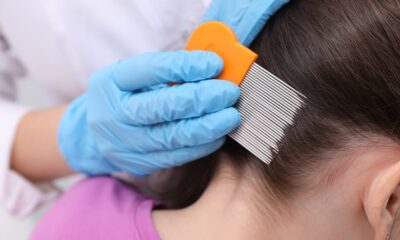
 Hair2 months ago
Hair2 months agoDoes a Flat Iron Kill Lice? Fact or Myth?
-

 Hair10 months ago
Hair10 months agoDoes a Flat Iron Kill Lice? Fact or Myth?
-

 Skin9 months ago
Skin9 months agoAbout Face Beauty: Tips for Enhancing Your Natural Beauty
-

 Skin10 months ago
Skin10 months agoNeutrogena Naturals Multi-Vitamin Nourishing Face Moisturizer Review
-

 Hair10 months ago
Hair10 months agoFunction of Beauty: Personalized Hair Care for Your Unique Needs
-
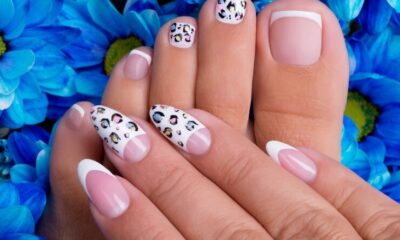
 Skin9 months ago
Skin9 months agoBeautiful Nails: Tips and Tricks for Healthy and Gorgeous Nails
-

 Hair10 months ago
Hair10 months agoTitanium Flat Iron vs. Ceramic
